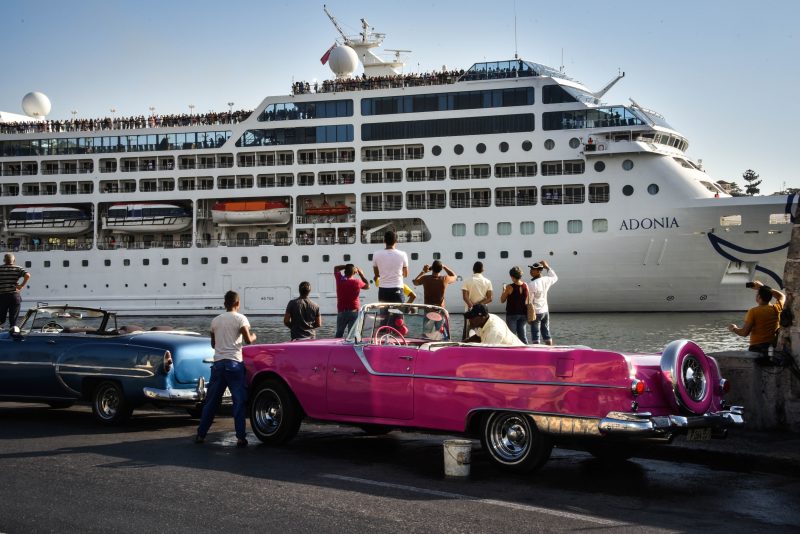US moves to bar American tourists from visiting Cuba
Cubans watch as the first US-to-Cuba cruise ship to arrive in the island nation in decades glides into the port of Havana, on May 2, 2016 (ADALBERTO ROQUE)
Washington (AFP) – The Trump administration clamped down on US tourist visits to Cuba Tuesday, aiming to cut the flow of dollars to a country Washington accuses of helping prop up Venezuelan President Nicolas Maduro.
The Treasury banned group educational travel and cruise ship and private yacht visits by Americans, taking aim at the most common ways US tourists visit the Caribbean island.
The move could constitute a heavy hit on Cuba, which saw more than a quarter-million US visitors in the first four months of 2019, almost double a year earlier.
“The United States holds the Cuban regime accountable for its repression of the Cuban people, its interference in Venezuela, and its direct role in the man-made crisis led by Nicolas Maduro,” the State Department said in a statement.
“Empowered by Cuba, he has created a humanitarian disaster that destabilizes the region.”
White House National Security Advisor John Bolton said the aim was to end what the administration considers “veiled tourism” to Cuba.
“We will continue to take actions to restrict the Cuban regime’s access to US dollars,” Bolton said on Twitter.
The Cuban government condemned the move, which could cost the country’s economy tens of millions of dollars a year in lost income.
“They seek to stifle the economy and damage the standard of living of Cubans to wrest political concessions,” said Foreign Affairs Minister Bruno Rodriguez in a tweeted statement.
“They’ll fail again.”
– Reverses Obama’s historic opening –
American tourism in Cuba took off after Barack Obama moved to ease the half-century embargo against the communist government in 2014 — even though continuing restrictions kept visits nominally in the realm of cultural and artistic exchanges and business dealings.
The former US president himself visited Havana in a historic trip in March 2016, meeting with then-president Raul Castro. Weeks later, the ban was lifted on US commercial ship visits, opening the door for the Caribbean cruise ship industry to expand stops in Cuba.
But President Donald Trump came into office attacking the Obama opening, and within months began tightening relations, first by banning individual visits and limiting commercial interactions.
The State Department tied the new ban directly to Havana’s support for Maduro — whose embattled regime faces a direct challenge from US-backed opposition leader Juan Guaido, the self-declared acting president of Venezuela.
“These actions are directly linked to the tourism industry, which has strong economic ties to the Cuban security, military, and intelligence sectors in Cuba,” it said.
“Veiled tourism has served to line the pockets of the Cuban military, the very same people supporting Nicolas Maduro in Venezuela and repressing the Cuban people on the island.”
Collin Laverty, president of Cuba Educational travel, one of the US agencies which arranges visits to Cuba, accused the Trump administration of playing politics by trying to appease the conservative anti-Havana Cuban immigrants in Florida, an important election swing state where they carry significant political weight.
“This political grandstanding aimed at Florida in the run up to the 2020 elections is so unfortunate for the millions of Cubans that will feel the crunch from less US visitors,” said Laverty.
“This has nothing to do with empowering the Cuban people and has everything to do with empowering a handful of people in Florida that have never even been to Cuba.”
Disclaimer: Validity of the above story is for 7 Days from original date of publishing. Source: AFP.


